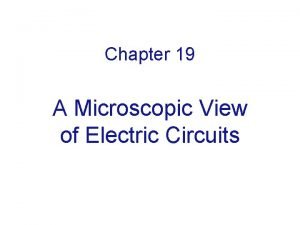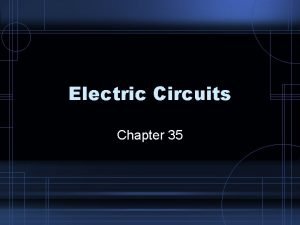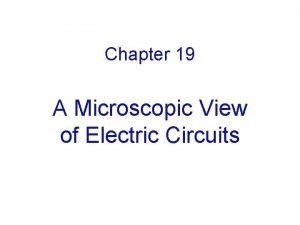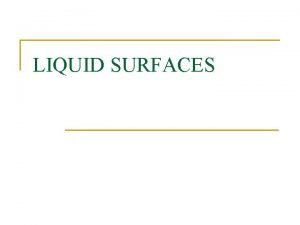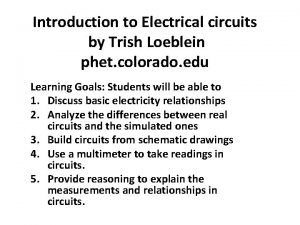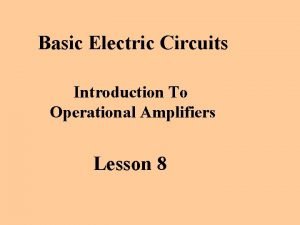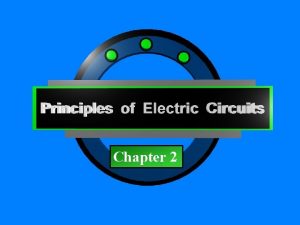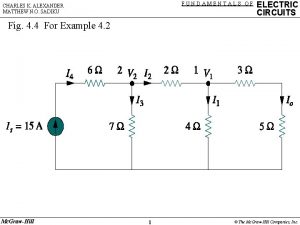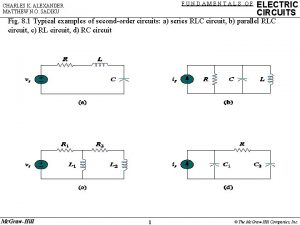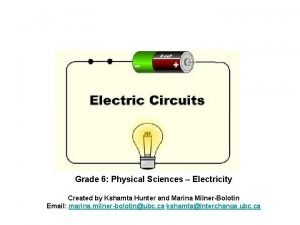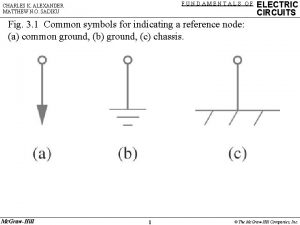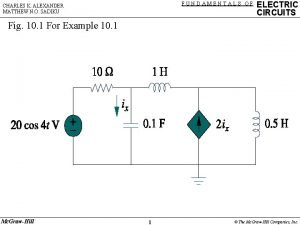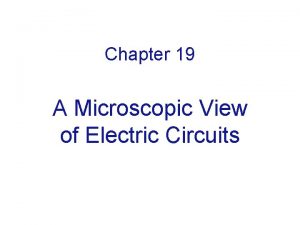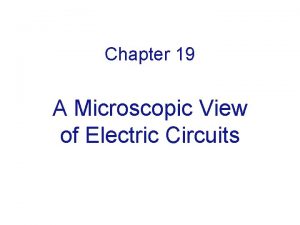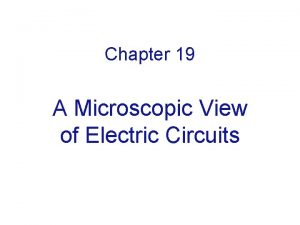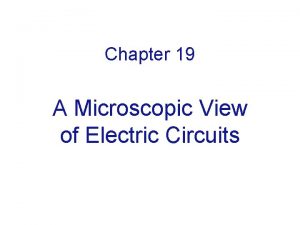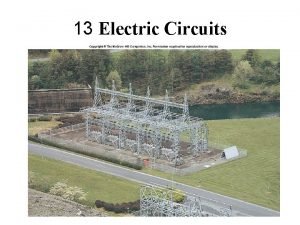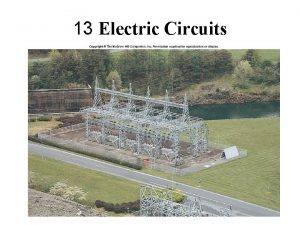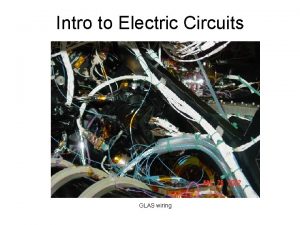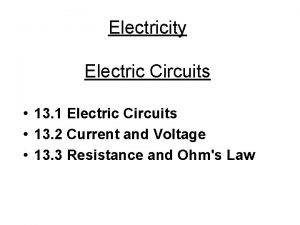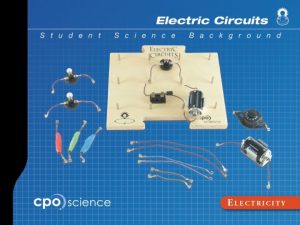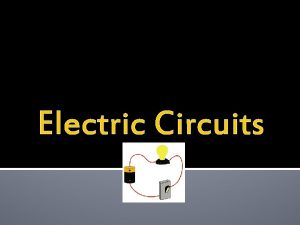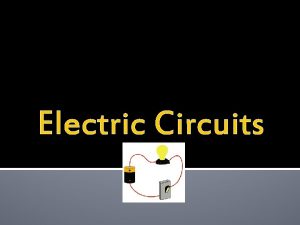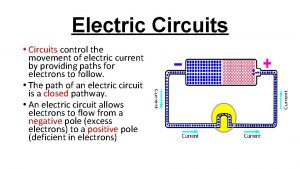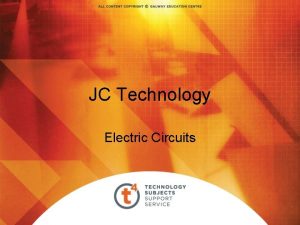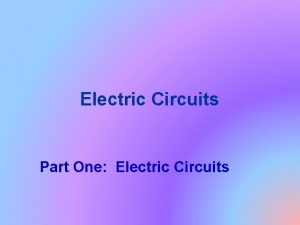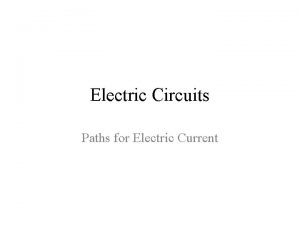Chapter 20 A Microscopic View of Electric Circuits



























- Slides: 27

Chapter 20 A Microscopic View of Electric Circuits

Capacitor: Construction and Symbols The capacitor in your set is similar to a large two-disk capacitor s There is no connecting path through a capacitor D

How is Discharging Possible? Positive and negative charges are attracted to each other: how can they leave the plates? Fringe field is not zero! Electrons in the wire near the negative plate feel a force that moves them away from the negative plate. Electrons near the positive plate are attracted towards it.

A B C D

The Effect of Different Light Bulbs Thin filament Thick filament Which light bulb will glow longer? Why? 1) Round is brighter capacitor gets charged more? 2) Long bulb glows longer capacitor gets charged more?

Effect of the Capacitor Disk Size Use two different capacitors in the same circuit In the first moment, which capacitor will cause the bulb to produce more light? Which capacitor will make the light bulb glow longer? Fringe field:

Effect of the Capacitor Disk Separation In the first moment, which capacitor will cause the bulb to produce more light? Which capacitor will make the light bulb glow longer? Fringe field:

Effect of Insulator in Capacitor Insulator In the first moment, which capacitor will cause the bulb to produce more light? Which capacitor will make the light bulb glow longer? Fringe field:

Consider two capacitors whose only difference is that capacitor number 1 has nothing between the plates, while capacitor number 2 has a layer of plastic in the gap. They are placed in two different circuits having similar batteries and bulbs in series with the Capacitor. In the first fraction of a second - A) The current decreases less rapidly in the circuit containing capacitor 1. B) The current decreases less rapidly in the circuit containing capacitor 2. C) The current is the same in both circuits.

Parallel Capacitors Initial moment: brighter? Will it glow longer? Fringe field: Capacitors in parallel effectively increase A

An Isolated Light Bulb Will it glow at all? How do electrons flow through the bulb? Why do we show charges near bulb as - on the left and + on the right?

Connecting Capacitor Parallel to a Battery

The Current Node Rule in a Capacitor Circuit Charge conservation: Ii > 0 for incoming Ii < 0 for outgoing I 1 = I 2+ I 3 …in steady state Capacitor transients: not a steady state! Cannot use Kirchhoff rule for a part of a capacitor (area 1 or 2) But can use for capacitor as a whole (area 3)

Capacitance -Q +Q Electric field in a capacitor: E In general: Definition of capacitance: Capacitance s Capacitance of a parallelplate capacitor:

Capacitance Units: C/V, Farads (F) Michael Faraday (1791 - 1867)

Exercise The capacitor in your set is equivalent to a large two-disk capacitor How large would it be? D ~ 10 km (6 miles) D s=1 mm

Exercise A capacitor is formed by two rectangular plates 50 cm by 30 cm, and the gap between the plates is 0. 25 mm. What is its capacitance?

A Capacitor With an Insulator Between the Plates No insulator: With insulator: D s

Macroscopic Analysis of Circuits Microscopic treatment: insight into the fundamental physical mechanism of circuit behavior. Not easy to measure directly E, u, Q, v. It is easier to measure conventional current, potential difference macroscopic parameters Need a link between microscopic and macroscopic quantities.

Resistance Many elements in a circuit act as resistors: prevent current from rising above a certain value. Goal: find a simple parameter which can predict V and I in such elements. Need to combine the properties of material and geometry.

Conductivity Combining the properties of a material Geometry Conventional current: Different properties of the material Group the material properties together: Current density: Conductivity

Exercise In copper at room temperature, the mobility of electrons is about 4. 5. 10 -3 (m/s)/(V/m) and the density of electrons is n=8. 1028 m-3. What is ? What is the strength of E required to drive a current of 0. 3 A through a copper wire which has a cross-section of 1 mm 2 ?

Exercise The conductivity of tungsten at RT is =1. 8. 107 (A/m 2)/(V/m) and it decreases 18 times at a temperature of a glowing filament (3000 K). The tungsten filament has a radius of 0. 015 mm. What is E required to drive 0. 3 A through it?

Conductivity with two Kinds of Charge Carriers

Resistance Conventional current: Widely known as Ohm’s law Resistance of a long wire: George Ohm (1789 -1854) Units: Ohm, Resistance combines conductivity and geometry!

Microscopic and Macroscopic View Microscopic Macroscopic Can we write V=IR ? Current flows in response to a V

Constant and Varying Conductivity Mobility of electrons: depends on temperature Conductivity and resistance depend on temperature. Conductivity may also depend on the magnitude of current.
 Is nichrome an ohmic resistor
Is nichrome an ohmic resistor Fundamentals of electric circuits chapter 4 solutions
Fundamentals of electric circuits chapter 4 solutions Chapter 20 electric circuits
Chapter 20 electric circuits Conceptual physics chapter 35
Conceptual physics chapter 35 Chapter 20 electric circuits
Chapter 20 electric circuits Fundamentals of electric circuits chapter 9 solutions
Fundamentals of electric circuits chapter 9 solutions Fundamentals of electric circuits chapter 7 solutions
Fundamentals of electric circuits chapter 7 solutions Chapter 35 electric circuits answers
Chapter 35 electric circuits answers Ohm's law worksheet
Ohm's law worksheet Chapter 35 electric circuits
Chapter 35 electric circuits Microscopic view of current
Microscopic view of current Microscopic view of liquid
Microscopic view of liquid Series parallel circuit current
Series parallel circuit current Chapter 21 electric charge and electric field
Chapter 21 electric charge and electric field Chapter 21 electric charge and electric field
Chapter 21 electric charge and electric field Coloumb units
Coloumb units Chapter 21 electric charge and electric field
Chapter 21 electric charge and electric field Phet electric circuits
Phet electric circuits Electric circuits equations
Electric circuits equations Electric circuits nilsson
Electric circuits nilsson Principle of electric circuit
Principle of electric circuit What three elements are required for all electric circuits
What three elements are required for all electric circuits Charles k. alexander matthew n. o. sadiku
Charles k. alexander matthew n. o. sadiku Sadiku
Sadiku Elec 202
Elec 202 Kshamta hunter
Kshamta hunter Fundamentals of electric circuits
Fundamentals of electric circuits Fundamentals of electric circuits
Fundamentals of electric circuits
